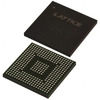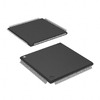Manufacturer Part Number
LCMXO2-7000HC-4FTG256I
Manufacturer
Lattice Semiconductor
Introduction
The LCMXO2-7000HC-4FTG256I is a high-performance, low-power Field Programmable Gate Array (FPGA) from Lattice Semiconductor’s MachXO2 series. This product is designed for flexible implementation of custom logic circuits, offering a versatile solution for a wide range of applications.
Product Features and Performance
Incorporates 6864 logic elements and 858 LABs/CLBs for complex digital functions
245760 total RAM bits for high-capacity data storage
206 programmable I/O pins for flexible connectivity
Operating temperature range from -40°C to 100°C ensuring performance in extreme conditions
Surface mount 256-LBGA package for compact integration
Product Advantages
Versatile programming allows for tailored functionality meeting specific design requirements
Low power consumption enhances device efficiency
High I/O count accommodates extensive external interfacing
Wide voltage supply range (2.375V to 3.465V) compatible with various power systems
Key Technical Parameters
Number of Logic Elements/Cells: 6864
Number of LABs/CLBs: 858
Total RAM Bits: 245760
Number of I/O: 206
Voltage Supply: 2.375V ~ 3.465V
Operating Temperature: -40°C ~ 100°C
Quality and Safety Features
Robust thermal management supporting a wide range of operating temperatures
Designed to meet stringent quality standards ensuring reliability and longevity
Compatibility
Compatible with various development and programming tools available for Lattice FPGAs
Can be integrated into existing designs owing to standard 256-LBGA package
Application Areas
Telecommunications
Automotive systems
Industrial automation
Consumer electronics
Internet of Things (IoT) devices
Product Lifecycle
Product status: Active
Not currently nearing discontinuation and replacements/upgrades are available to ensure future-proofing
Several Key Reasons to Choose This Product
High integration capacity suitable for complex digital system design
Extended operational reliability with support for industrial temperature ranges
High customization potential through programmable logic resources
Multi-voltage compatibility allowing for greater flexibility in system design





 LCMXO2-7000HC-4TG144CLattice Semiconductor CorporationIC FPGA 114 I/O 144TQFP
LCMXO2-7000HC-4TG144CLattice Semiconductor CorporationIC FPGA 114 I/O 144TQFP